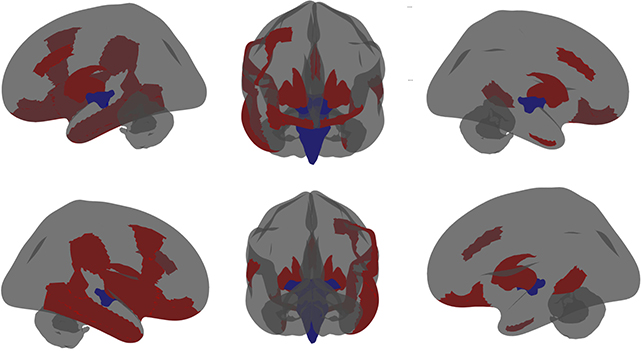Characterized by common differences in motor and social behaviors, autism spectrum disorder (ASD) is also a condition that affects individuals in unique ways. Identifying the characteristics of the brain that can explain its various manifestations and commonalities across all ages is a goal of scientists seeking to understand the cause.
The latest research, led by a team at the University of Rochester in New York, uses advanced scanning techniques to build on previous work on variations in the neurology of people with ASD, offering a closer look of the density and structure of the gray matter of the brain.
It is often difficult to perform this type of analysis on living people – which is why much of the existing data we have is based on older post-mortem subjects – but new technology for capturing and processing data The images mean we can now also see how the brain is wired. among the youngest.

“We have spent many years describing the broader characteristics of brain regions, such as thickness, volume and curvature,” says neuroscientist Zachary Christensen of the University of Rochester.
“However, more recent techniques in the field of neuroimaging, to characterize cells by MRI [ magnetic resonance imaging]reveal new levels of complexity throughout development.
Researchers used a form of high-contrast MRI to create detailed maps of the brains of 142 children with autism, comparing them with images taken from 8,971 controls (children without a diagnosis of autism). A series of readings was carried out when the volunteers were 9 or 10 years old, with a follow-up series carried out a few years later.
The comparisons revealed lower neuronal densities in certain regions of the cerebral cortex thought to be responsible for our ability to learn, reason, solve problems and successfully form memories.
In other areas, neuronal density increased. This was, for example, the case in a region called the amygdala, which scientists believe helps process emotions. Additionally, when comparing children with autism to children with ADHD and anxiety, these differences appear specific to autism.
It’s too early to say what these density differences mean, but they could help explain some features of autism. Importantly, new imaging methods now allow us to track the disease as it develops.
“If characterizing unique deviations in neural structure in autistic people can be done reliably and relatively easily, this opens up many opportunities to characterize the development of autism,” says Christensen.
“These measures can be used to identify individuals with autism who might benefit from more specific therapeutic interventions.”
It is only relatively recently that we have been able to perform non-invasive brain scans with such precision and detail, and efforts are already underway to follow autistic people over longer periods of time, in order to help understand the resulting brain changes. they see the world differently.
“It really transforms what we know about brain development when we follow this group of children from childhood through early adulthood,” says neuroscientist John Foxe, of the University of Rochester.
The research was published in Autism research.



